Beside rheological parameters for example thermodynamic properties, the specific volume of the polymer as a function of temperature and pressure, can be determined using the option pVT. These data are particularly important for the simulation of the injection moulding process. But they also can be used to describe any process of shrinkage during cooling as for example in extrusion.
The measurement can be performed in two possibilities:
Isothermal – at constant temperature and changing pressure
isobaric – at constant pressure with different cooling rates.
The extension of pVT measurement described as follows to isobaric test method according ISO 17744 using capillary rheometers is so far unique in commercial devices and delivers similar results as plain pVT devices.
In case of isothermal test the measurement is started at room temperature, as shown in the left diagram of figure 1, after the sample filled at melt temperature was slowly cooled down to room temperature. The pressure is then increased stepwise before the next temperature is set. This measurement cycle is repeated for every temperature step.
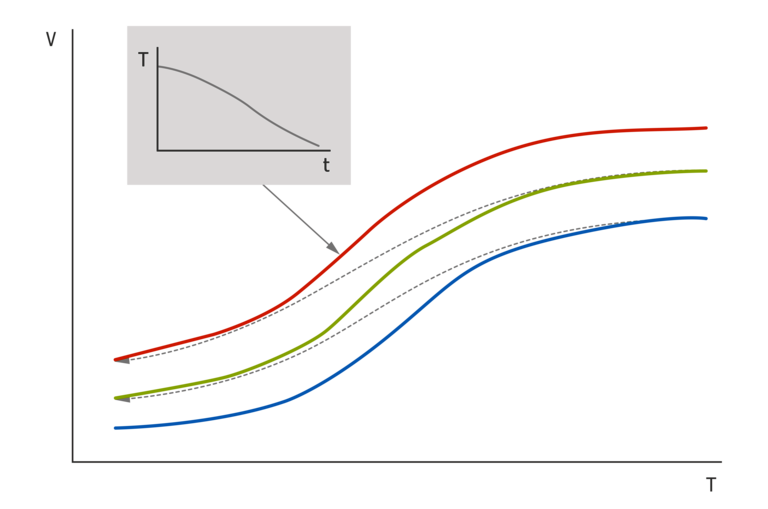 Principle of pVT measurement (isobaric)
Principle of pVT measurement (isobaric)
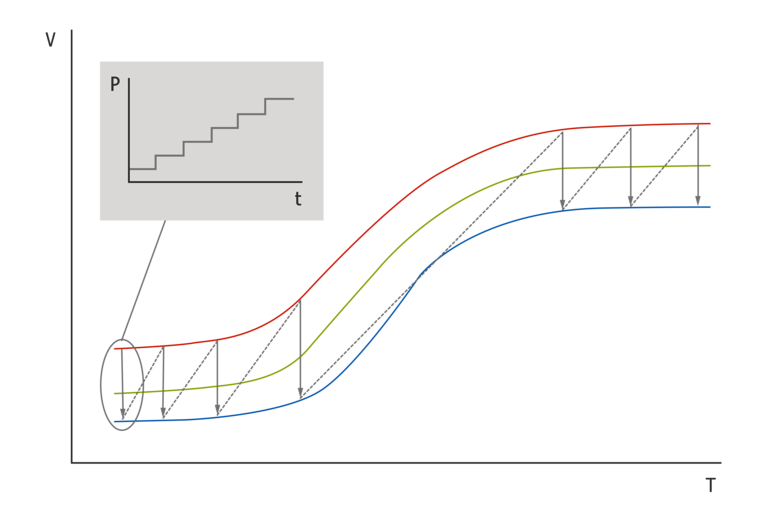 Principle of pVT measurement (isothermal)
Principle of pVT measurement (isothermal)
To achieve an improved temperature transfer from cooling medium to test barrel the amount of cooling channels is increased by a factor of 3. Thus a complete cooling shell is generated. Here a new design concept of a twin shell is use, while pipes had been used with the previous design. Much more heat energy can be transferred by the increased surface and direct contact. Therefore significantly higher cooling rates of the samples can be achieved.
Test barrel previous-new / increase of cooling channels by the factor of 3
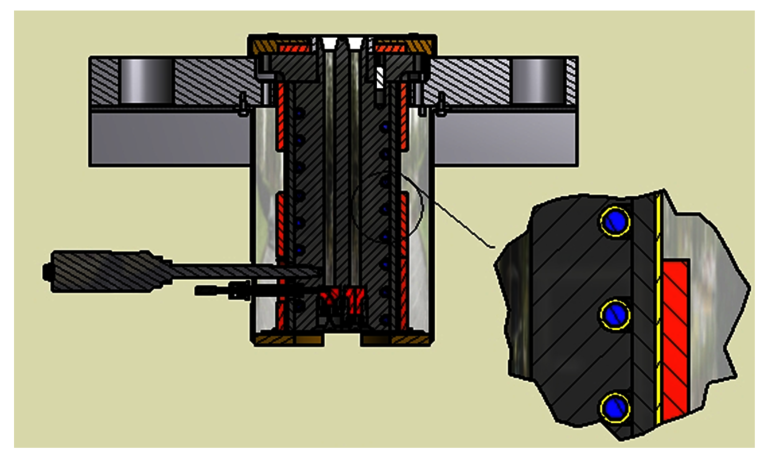 Previous design with rolled in copper cooling pipes
Previous design with rolled in copper cooling pipes
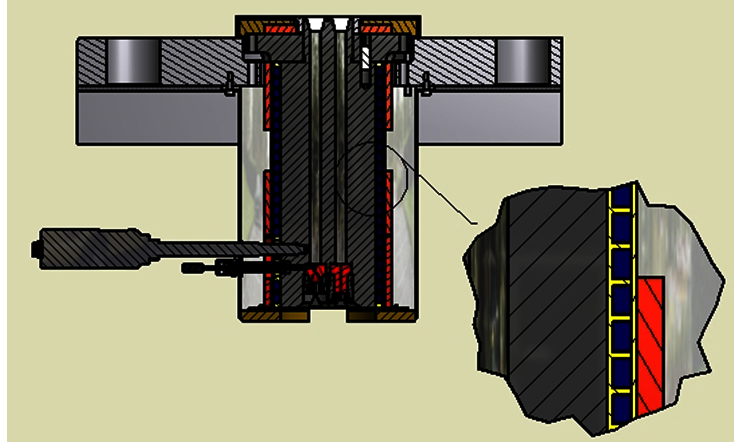 Optimized design with tempering jacket
Optimized design with tempering jacket
Figure 3 shows that twice the cooling rate is possible using the optimized design compared to the previous design due to better heat transfer and three times higher number of cooling channels in the melt area of polyethylene.
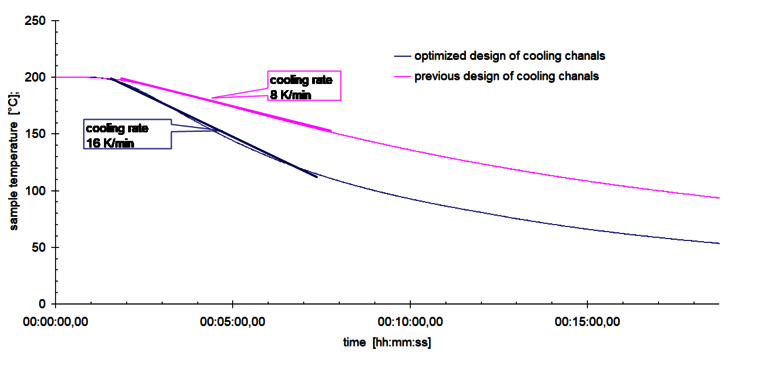 Figure 3: Comparison between previous and optimized design of test channels
Figure 3: Comparison between previous and optimized design of test channels
For testing of plastics for technical applications the temperature range for cooling is increased up to 350°C, which was so far reached only by exclusive PVT devices. Figure 4 shows, that much higher cooling rates up to 25 K/min are possible in this temperature range. Achievable cooling rate are also higher than the required range between 5 and 20 K/min described in ISO 17744 for piston operated PVT devices.
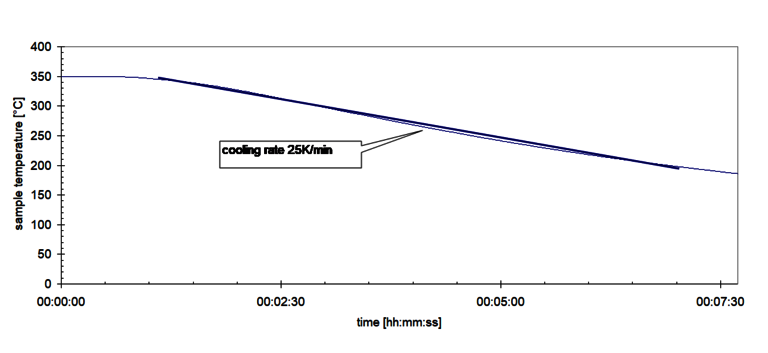 Figure 4: cooling rate in the temperature range of plastics for technical applications
Figure 4: cooling rate in the temperature range of plastics for technical applications
Plastics can be divided into partially crystalline (PE, PP) and amorphous (PS, PC) plastics. For PA and PET both amorphous and partially crystalline types are available.
Especially for partially crystalline plastics PVT diagrams differ depending whether they have been determined isobaric or isothermal, as for isobaric measurement recrystallisation time is reduced by fast cooling rates and less crystalline areas are generated. Hereby the specific volume in the transition between melt and solid is influenced.
Figure 5 shows for a comparison between isothermal and isobaric test procedure for a HDPE sample:
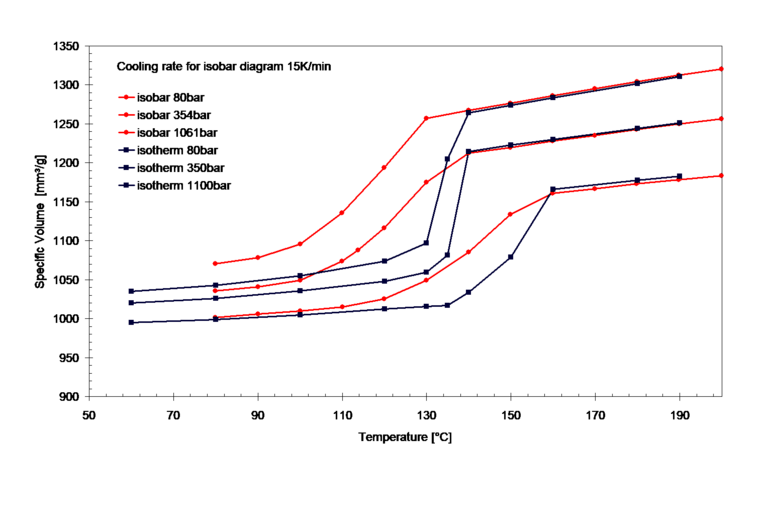 Figure 5: PVT Diagram HDPE, isothermal-isobaric
Figure 5: PVT Diagram HDPE, isothermal-isobaric
First both diagrams are nearly identical in the melt area. In transition between melt and solid are significantly lower shrinkage can be recognized for the isobaric diagram determined with a cooling rate of 15 K/min. This reduced shrinkage goes on with the solid area. Generally reduction of shrinkage is higher with faster cooling rate and the slope of the isobars become smoother in the transition area.
Resolution of displacement is increased from 0,00078 mm with model Rheotester 2000 and 0,001 mm with model Rheograph 6000 to 0,0000016mm with the new models Rheograph 20-120.
Thus resolution of the piston displacement is improved by a factor of app. 500-600.
The accuracy for determination of the sample volume during PVT measurement improved hereby is reflected in a good agreement to measurements performed with the Gnomix PVT Dilatometer, as shown in figure 6. A good agreement with less than 1% is given as depicted.
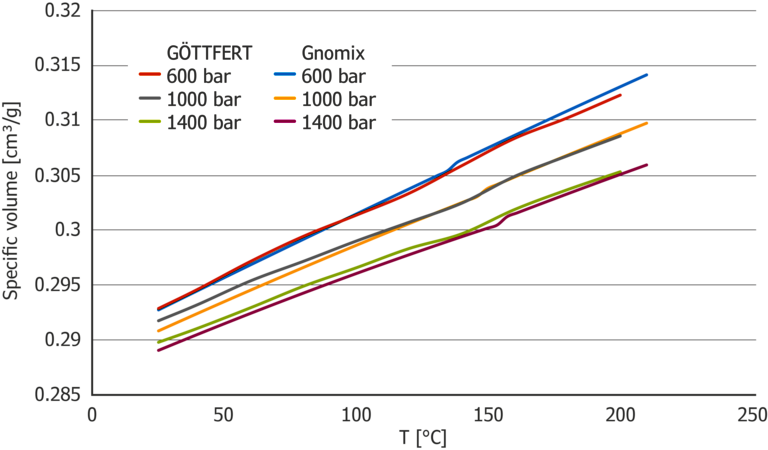 Figure 6: Comparison of pVT measurement between Gnomix Dilatometer and GÖTTFERT pVT Option
Figure 6: Comparison of pVT measurement between Gnomix Dilatometer and GÖTTFERT pVT Option
The option pVT is extended by the functionality of automatic measurement process control. Hereby both isobaric and isothermal measurement courses can be controlled automatically via the „Script-function” of the devices Rheograph 20, 25, 75, 120. The volume at pressure and temperature steps is store by previous set „Script“ after reaching set tolerances for changes. The complete measurement can be run without action of the operator for example over night achieving a reduction of labour of 1-2 working days compared to previous versions.
Further the evaluation is extended by the automatic determination of the coefficients of Tait model. Tait model divides a pVT diagram in the areas of solid and melt. The model equation used are similar to the ones of injection molding software tools and therefore the coefficients can directly be used in injection molding software like „C-Mould“ or „Mold Flow“.
The pVT Option for GÖTTFERT capillary rheometers described here has similar functionality and accuracy regarding pVT measurement as pVT Dilatometer not reached so far from any other producer of capillary rheometers. But the option offers for a similar price additionally the full functionality of a capillary rheometer!
Improvements in overview: